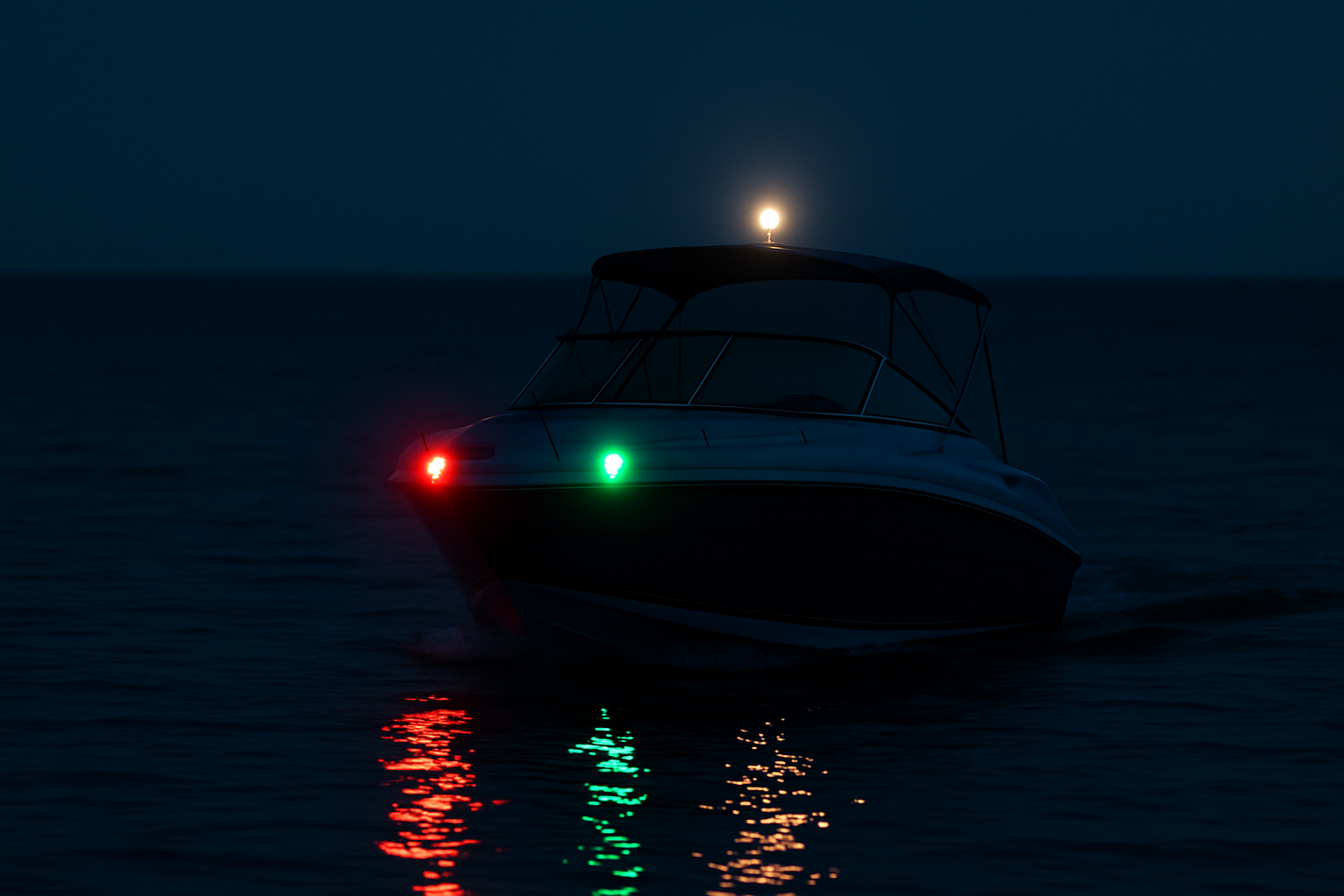What Are the Red and Green Lights on a Boat?
Whether you're new to boating or a seasoned mariner, understanding navigation lights is essential for safety on the water. Among the most recognized and regulated are the red and green lights positioned at the bow of vessels. But what exactly do they mean? When should they be used? And how do they help prevent collisions?
In this guide, we’ll explain the function, placement, legal requirements, and best practices for red and green navigation lights on boats.
Understanding Navigation Lights
Navigation lights are essential for ensuring that vessels can see and be seen in low-visibility conditions like nighttime or fog. They help boaters determine the position, heading, and type of vessel they’re observing—critical information for avoiding collisions and complying with U.S. Coast Guard regulations.
There are four primary types of navigation lights:
- Red light – Indicates the port (left) side of the boat.
- Green light – Indicates the starboard (right) side of the boat.
- White light – Usually used as a stern or masthead light.
- All-around light – Combines masthead and stern lights, often used on smaller vessels.
What Do the Red and Green Lights on a Boat Mean?
The red and green navigation lights are known as sidelights and are located near the front (bow) of the boat:
- Red Light: Mounted on the port (left) side.
- Green Light: Mounted on the starboard (right) side.
These lights allow other vessels to determine which direction you’re traveling. When another boater sees both your red and green lights, they know they are approaching your bow head-on. If they only see the green light, they know they are approaching your starboard side. If they only see the red light, they’re seeing your port side.
This information tells them how to maneuver safely, especially at night or during poor visibility conditions.
When Are Red and Green Boat Lights Required?
According to U.S. Coast Guard regulations and international maritime law (COLREGS), all vessels operating between sunset and sunrise (or during times of restricted visibility such as fog) must display the proper navigation lights. This includes recreational boats, sailboats, personal watercraft, and even kayaks or paddleboards in some states.
Requirements Based on Boat Type:
Powerboats under 12 meters (39.4 ft):
- Red (port) and green (starboard) sidelights (combined or separate).
- All-around white light visible from 360°.
Powerboats over 12 meters:
- Red and green sidelights.
- A separate white stern light and masthead light.
Sailboats under sail (not under engine power):
- Red and green sidelights.
- Stern light.
- Optional: a tri-color light at the masthead.
Failure to display the proper lights can lead to fines or accidents, especially in busy waterways.
How to Install Red and Green Boat Lights Properly
Proper installation ensures visibility and compliance:
- Position: Red on the left (port), green on the right (starboard). They should be visible from at least two miles away (one mile for vessels under 12m).
- Angle: Each sidelight should shine an arc of 112.5°, covering from directly ahead to 22.5° abaft the beam on their respective sides.
- Height: Keep them level and as far forward as possible without being blocked by railings or hardware.
- Mounting: Use corrosion-resistant hardware and waterproof seals to ensure long-term functionality.
For easy setup, many boaters use LED navigation light kits that are pre-wired and waterproof—perfect for durability and energy efficiency.
LED Navigation Lights vs. Traditional Bulbs
Modern LED lights have largely replaced incandescent bulbs for marine use—and for good reason:
- Energy efficient: Uses less battery power.
- Longer lifespan: LEDs can last 25,000+ hours.
- Shock resistant: Better performance in rough conditions.
- Brighter and more visible: Improves safety and compliance.
At Ultra Bright Lightz, we offer marine-grade LED navigation lights that are waterproof, corrosion-resistant, and compliant with USCG regulations—perfect for your boat, whether you're cruising, fishing, or racing.
What Do You See from Other Boats?
Knowing how your boat should look is one thing. But understanding what you’re seeing from other vessels is equally important. Here’s how to interpret other boats' lights:
| Lights You See | What It Means | What to Do |
|---|---|---|
| Red and Green (head-on) | Boat is approaching head-on | Both boats turn starboard (right) |
| Green only | You're looking at the starboard side | You have the right of way |
| Red only | You're looking at the port side | You must give way |
| White only | Boat is moving away from you | Maintain course unless overtaking |
| White and green | Boat is crossing from your left to right | You have the right of way |
| White and red | Boat is crossing from your right to left | Give way |
Common Mistakes to Avoid
- Reversed Placement: Mounting the red light on the starboard side is a critical (and dangerous) error.
- Low Visibility Lights: Using outdated bulbs that are dim or misaligned can result in poor visibility.
- Wrong Light Configuration: Using only a white light when red and green are required may violate regulations.
- Obstructed View: Installing lights behind equipment or railings limits their effectiveness.
- Using Decorative Lights as Navigation Lights: RGB accent lighting or deck lights are not substitutes for legal navigation lighting.
Safety Tips for Boating at Night
Even with properly installed red and green navigation lights, night boating requires extra caution. Here are some tips:
- Keep a lookout: Assign a spotter to watch for other vessels.
- Use radar and GPS: Combine electronic tools with visual observation.
- Reduce speed: Nighttime limits visibility and reaction time.
- Check your lights before launch: Ensure all bulbs are functional and correctly aligned.
- Know local laws: Some jurisdictions have additional lighting requirements.
Shop Marine Navigation Lights at Ultra Bright Lightz
If you're upgrading or replacing your red and green boat lights, Ultra Bright Lightz has you covered. Our marine LED lighting solutions offer top performance, durability, and full compliance with U.S. Coast Guard regulations.
Whether you need individual red and green lights, full LED boat lighting kits, or accessories for installation, we provide fast shipping and expert support to make sure your time on the water is safe, legal, and enjoyable.
👉 Shop Boat Navigation Lights Now
Final Thoughts
The red and green lights on your boat are more than just colorful features—they are life-saving tools that help avoid accidents, especially in the dark. Understanding their placement, meaning, and proper use ensures that you stay safe and compliant on every voyage.
Always double-check your lighting system before heading out, and when in doubt, invest in quality LED marine lights that meet legal requirements and provide superior visibility. Safe boating starts with being seen—and understanding what others see too.


